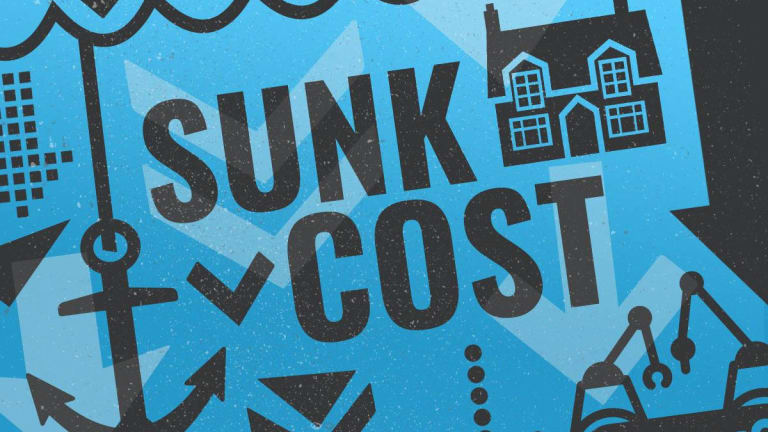Overcoming the natural tendency to consider historical and sunk costs when evaluating business alternatives
- Introduction
If you can recall, I did mention in the first week that accounting skills are necessary for managers because it aids them in understanding the different costs that a company can incur, how to calculate such costs and adopt the calculation in decision making process. As such, I will be explaining these different kinds of costs this week, as well as how they are applied in the business context.
- Types of cost and their application
Basically, all costs are classified as either fixed or variable. Total cost is the sum of all costs that a firm incur in the process of producing any given level of output – which is the sum of all variable and fixed costs. The different types of costs and their applications are as discussed below, based on adoptions from utilityregulation.com (n.d.).

- Fixed costs—this form of cost does not change irrespective of changes in the level of production in the short run. This cost must be paid irrespective of how much the company produced, or even if it does affect any production, as long as it doesn’t entirely withdraw the factors of production from the market. Examples include the costs incurred when selling assets.
- Variable cost: This type of cost directly changes (not necessarily at a proportional rate) with changes in production level.Such costs include the electricity bill for running a machine and the salaries of workers, which increase as production increases and vice versa.
- Opportunity cost: this is defined as the value of all inputs in a firm’s production when their most valuable alternatives are considered. It is the value of the best alternative that is forgone when another alternative is chosen. For instance, a company that uses one machine to produce both biscuits and bread incurs an opportunity cost when producing bread only, as it is foregoing the alternative of producing biscuits. The decision is normally influenced by market demand. This means that if there is a high demand for bread, production will be concentrated on bread, and vice versa.
- Sunk cost: these are already incurred costs that are not retrievable and, as such, irrelevant in current decision-making as it is impossible to avoid them irrespective of the selected action. For instance, if a company hires a manager for $100,000 but the manager doesn’t perform later on, the decision to retain or let go of the manager will not bring back the cost of hiring the manager.
- Marginal cost: this is the cost of increasing production by one additional unit. It is only influenced by variable costs.
- Incremental cost: this is the resulting change in total cost as the output increases or decreases. During increase in output, the cost increase and vice versa.
- Explicit cost: this form of cost involves a direct monetary outlay. For instance, it is the cost an airline incurs by using its airplanes.
- Implicit cost – this form of cost doesn’t involve direct monetary outlay. For instance, it is the money an airline company generates from leasing its jets instead of actually using them.
- Relevant costs in decision-making
From the above discussion, it has been highlighted that all costs fall within variable and fixed costs. The fixed cost doesn’t change with subsequent changes in production, whereas the reverse is true for the variable cost. As such, variable costs and opportunity costs are the most relevant when it comes to decision making. In the process of choosing one decision over the other, the company must consider the cost of such decision (variable) and expected benefits against the opportunity forgone (WSU, 2012). All other costs discussed fall within these two categories, and their influence on decisions is not as relevant as the two discussed in this case.
Overcoming the natural tendency to consider historical and sunk costs when evaluating business alternatives
Just as in the case of hiring an underperforming manager, discussed in the sunk cost section above, it does come naturally for managers to consider past sunk costs when making decisions. This is because a manager who spent a lot of money on an underperforming employee will not do it again because of the negative impact it can have on the company's financial performance.
As a result, managers must overcome the tendency to consider past sunk costs when making present decisions, as such decisions will eventually influence future performance.
Focusing on corporate goals is the recommended approach. Managers need to focus on what the company has presently and what it desires to possess in the future and adopt decisions that will potentially aid such outcome. While it is possible for the past outcome to recur in this decision, it should be noted that change is a constant process in business and the reverse can always be the case. The manager should clearly understand what the company’s goals are and focus on attaining them by employing and deploying the right assets capable of aiding the company in achieving those goals.
Reference
Washington State University (WSU) (2012), “Chapter 7: cost and cost minimization.” Available at: http://faculty.ses.wsu.edu/Munoz/Teaching/EconS301_Fall2011/Slides_EconS301_only_pdfs/EconS301_Ch7.pdf. [Accessed on; 03/26/2015].
Utilityregulation.com (nd). Costing Definitions and Concepts http://www.utilityregulation.com/content/essays/t1.pdf [Accessed on; 03/26/2015].





